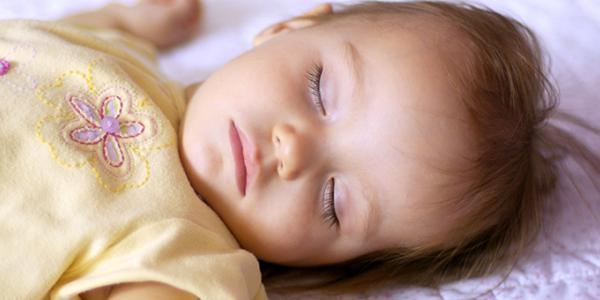Encouraging Healthy Sleep Habits

You are here
By: Hattie Harvey, PhD, NCSP
Sleep is critical to children’s everyday functioning. A good night’s sleep helps prepare children to attend to new experiences, positively engage with others, and build memory and attention skills. When children sleep, their brains are actively working to form new connections, allowing them to be more physically relaxed and mentally alert when awake. These positive effects can be observed over time, and as a parent you play a critical role in helping your child establish healthy sleep habits.
Why are sleep habits important?
Establishing healthy sleep habits early on helps to prevent children’s long-term sleep problems and other associated risk factors. Researchers have linked poor sleep habits to a greater risk for obesity, impaired memory and attention, and poor academic performance in school-age children (Aronen, Paavonen, Fjallberg, Soininen, & Torronen, 2000; Buckhalt, El-Sheikh, & Keller, 2007; El-Sheikh, Buckhalt, Cummings, & Keller, 2007; Meltzer, & Mindell, 2009). Further, insufficient sleep also has been associated with higher rates of aggression and can negatively affect interpersonal relationships with family and peers (El-Sheikh et al., 2007). Outlined below are some key concepts and strategies for establishing healthy sleep habits.
Key Sleep Strategies to Consider
Think of these strategies as a collection of related elements, all of which must be present to ensure healthy sleep habits.
1. Sleep Duration. Consider the total amount of sleep during both night and day: is your child getting enough sleep? The following table outlines basic recommended sleep durations by age.
|
Recommendation Sleep Duration |
||
| AGE GROUP | YEARS | RECOMMENDED TOTAL SLEEP |
| Infants | 3 to 12 months | 14 to 15 hours |
| Toddlers | 1 to 3 years | 12 to 14 hours |
| Preschoolers | 3 to 5 years | 11 to 13 hours |
| School-age | 6 to 12 years | 10 to 11 hours |
2. Naps. Is your child taking naps or do you sometimes skip nap? Naps lead to optimal daytime functioning. If you miss one, try to keep your child up until the next sleep period (or close to it) to maintain the child’s sleep pattern. Consider the following
- By 4 months most children take three to four naps per day
- By 8 months most children take two naps
- By 21 months most children take one nap
- By age 6 most children no longer nap
3. Sleep Quality. When sleep is continuous, your child can naturally learn to fall back asleep following a brief awakening. Too many awakenings fragment sleep, disrupting brain growth and the natural sleep cycle. After 4 months of age, naps of less than one hour do not provide enough time for the brain to benefit from the nap.
4. Recognize signs of drowsiness. Nap and bedtime should begin during your child’s drowsy stage, not when she is overtired. Identify your child’s signs of drowsiness; they may include decreased activity, slower motions, , drooping eyelids, yawning, and eyes that are less focused. Drowsy children also may be less vocal, quieter, or calmer. Your child may have more difficulty falling asleep if she is overtired; signs of overtiredness may include fussiness, eye rubbing, irritability, or crankiness.
4. Establish consistent bedtime and wake-up routines. Your routines may be adjusted based on age or your family’s preference. Avoid stimulating activities such as watching television or playing video games prior to bed, instead choose calming activities like reading or storytelling. Whatever you choose, keep the sequence consistent! Doing so helps to maintain your child’s internal clock on a 24-hour cycle. Note that infants younger than 4 months have immature internal clocks, so this does not apply to them.
5. Be a team player and communicate! Communicate with those who are involved in your child’s life, such as another parent, child care providers, a nanny, or relatives. Share your strategies and your child’s signs of drowsiness, so that they can also support establishing healthy sleep habits for your child.
About the Author: Dr. Hattie Harvey teaches at the University of Alaska Anchorage in the Early Childhood Education program. She is a nationally licensed school psychologist and enjoys collaborating with local early childhood programs on assessment and instructional practices.